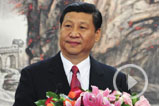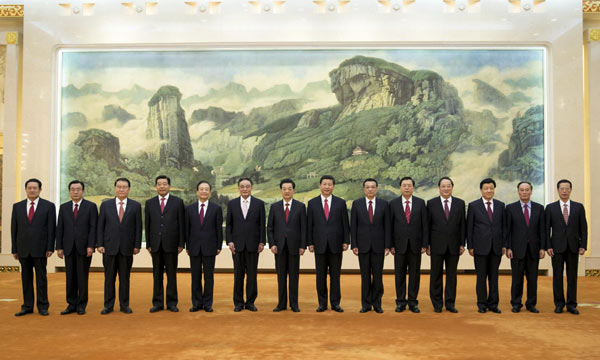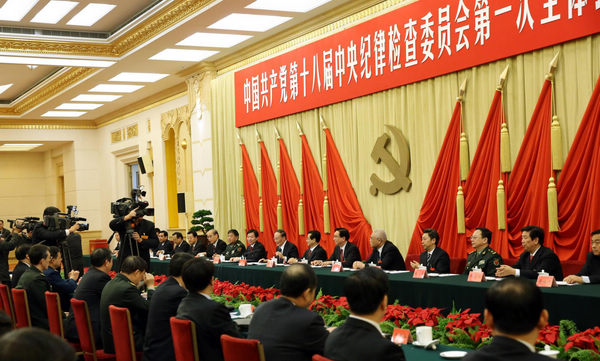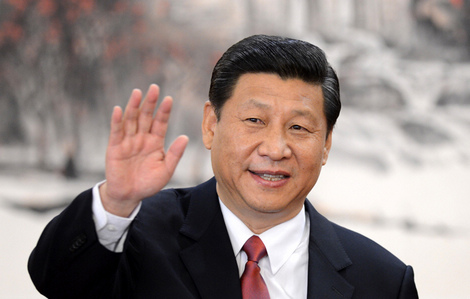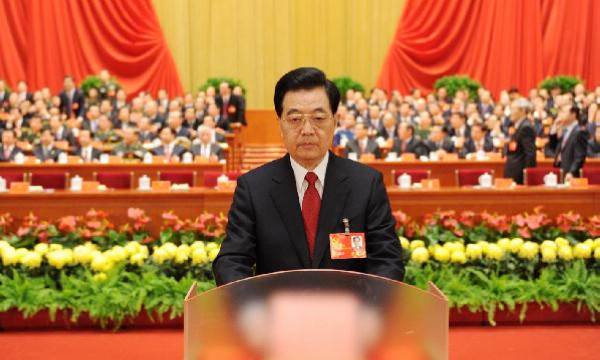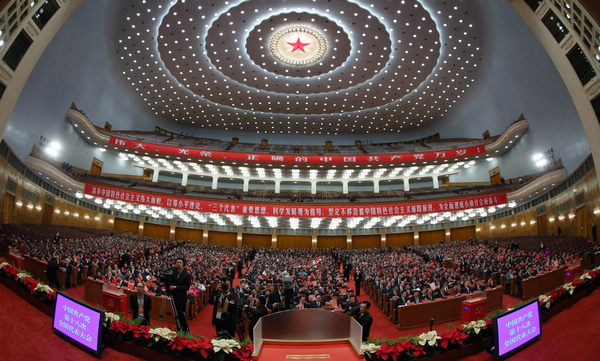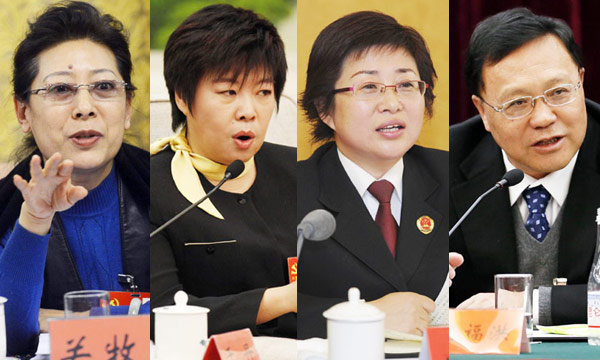Birthplace of the Communist Revolution
By Xu Junqian (China Daily)
Updated: 2011-06-30 15:20
|
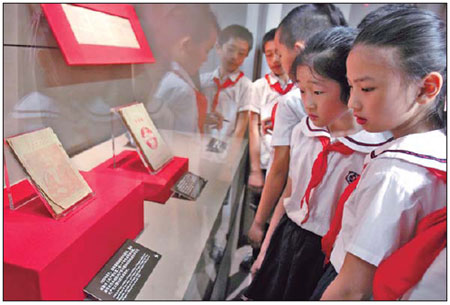 Pupils look at a copy of the first Chinese version of the Communist Manifesto on display at the Memorial House for the First National Congress of the CPC on June 13 in Shanghai. [Xinhua] |
SHANGHAI - What happened here 90 years ago, in a most inconspicuous Shanghai lane house, has turned the place into a mecca for millions of people in China, if not the entire population of 1.3 billion.
Sitting in the center of the metropolis' most popular fashion hub, Xintiandi, the red and grey-brick two-story house that looks no different from thousands of lane houses, once the most common residence in the city, has attracted millions of people over the past decades.
They have all come for one reason: to have a close look at the venue of the meeting that launched a new era for the country.
On an ordinary night on July 23, 1921, 13 people traveled from all over the country to this 18-square-meter living room on the first floor of the house and, with two foreigners, secretly began the meeting.
Among the 13 attendants were people whose names would become some of the best-known in the country: Mao Zedong, Dong Biwu and Chen Tanqiu, and the meeting they were holding was to found the Communist Party of China (CPC).
"It was an earthshaking and inspiring event," said Yang Yu, the 31-year-old interpreter at the Memorial House for the First National Congress of the CPC.
"And you won't know what it means for the country and its people until you come here in person," she said, while wearing a navy blue tweed uniform, or what is known as a "reformed Zhongshan suit", a popular suit named after the pioneer of China's democratic revolution and the founder of the Kuomintang, Sun Yat-sen.
Calling herself "the oldest one among the new generation of house guides", Yang remembered the first birthday she celebrated for the Party decades ago.
"It was a sizzling summer," Yang recalled. "A retired policeman who had been physically disabled, in the company of his family members, insisted on visiting the house in a wheelchair while in Shanghai to receive medical treatment.
"Throughout the visit, he listened attentively with his injured neck tilted to one side. You had to talk to him in the same way. It was tiring, but his serene and solemn air was unforgettable."
In the 450-sq-m Memorial House is a well-funded and well-laid out collection on the theme of Chinese revolutions since the Opium War in 1840.
Items displayed here come from the major events in modern Chinese history dating back to the Taiping Rebellion of 1851. There is also a sub-theme of imperialism and oppression in China, with displays such as boundary stones from the international settlement of colonial Shanghai.
One of the highlights of the exhibition is a full-scale model of the First Congress with wax models of each of the 13 delegates, including Mao Zedong in the middle as a note taker, and Li Da and Li Hanjun, the owner of the house and one of the organizers.
According to Xiong Yuezhi, vice-president of Shanghai Academy of Social Sciences, aside from the fact that the house was then the residence of Li Hanjun, a major reason the meeting took place here was the house's favorable location.
On the border of the French concession, the walled Chinese city and the Shanghai international settlement (the former British concession), the area was something of a gray zone, free from supervision by the three areas.
The weeklong meeting, however, was interrupted on the second last day by the sudden visit of a suspicious man, who claimed to be looking for someone but later proved to be a watchdog from the French police, who initiated a "patrol" 15 minutes after his visit.
The meeting was called off and the attendees fled. At the suggestion of Wang Huiwu, the co-organizer and the wife of Li Da, the meeting was transferred and completed on a boat on Nanhu Lake (South Lake) in Jiaxing, Zhejiang province.
Thus, a new political party, which later founded a new country, was established.
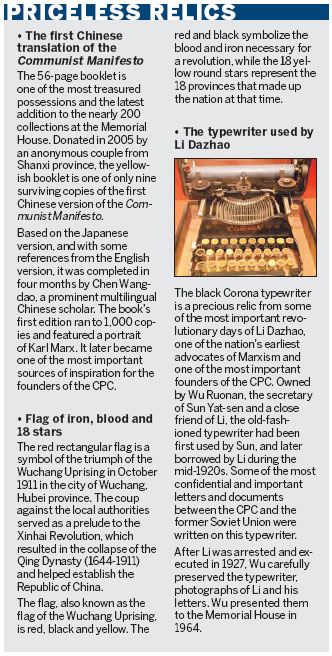
But it was not until 1950, almost 30 years after the First Congress, that the location of the event was rediscovered. Two years later it was opened for CPC members as the Shanghai Revolutionary Museum.
In 1968, the place was officially named the Memorial House of the First National Congress of CPC and was opened to the public. It undergoes minor repairs every five years, and a major one every 10 years.
"Changes have been tremendous here, even in the past decade I have worked here," Yang said.
In 1998, for example, the house underwent a major expansion to better accommodate the large number of visitors. Adjoining the western side of the original building, a house covering more than 2,000 sq m, almost four times the size of the old one, was added.
To keep the exhibits and the house in the best condition, state-of-the-art materials and technologies have been used in recent repairs. The special paint for the facade, for instance, is not only water- and corrosion-proof, but also gives the century-old brick house a softer and more original look.
As well, the lightbulbs used in the exhibition hall, which cost 600 yuan ($92) each, are specially designed to allow visitors to observe the precious relics clearly while causing minimal damage to the objects.
"The changes are all very subtle and simple," Yang said. "We wanted to keep everything the way it was 90 years ago."
Statistics from the Memorial House show that since it opened to the public 43 years ago, more than 10 million people, from China and abroad, have visited it. The small brick house has not only been a popular destination on the red tourism route, but also a venue for group weddings and for new Party members to take the oath of commitment.
In 2010, visitor numbers set a record because of the Shanghai World Expo, reaching 580,000, of whom 42,000 were foreigners. This year, the number is expected to exceed 600,000 people.
"It's overwhelming," said Yang. "Especially with the approach of the 90th birthday of our Party, people are coming in like a flood."
One of the biggest changes is that up to 70 percent of visitors are backpackers, families and individuals coming by themselves, while in earlier times most were groups organized by schools and institutions.
"And they are not stopping by on their way to Xintiandi," added Yang.
"Instead, the house has become a must-see stop for both locals and travelers."
China Daily
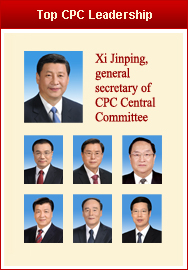
Top News
Xi emphasizes adherence to CPC Congress spirit
Top legislator urges implementation of congress spirit
Moderately prosperous China brings chances to world
Video
